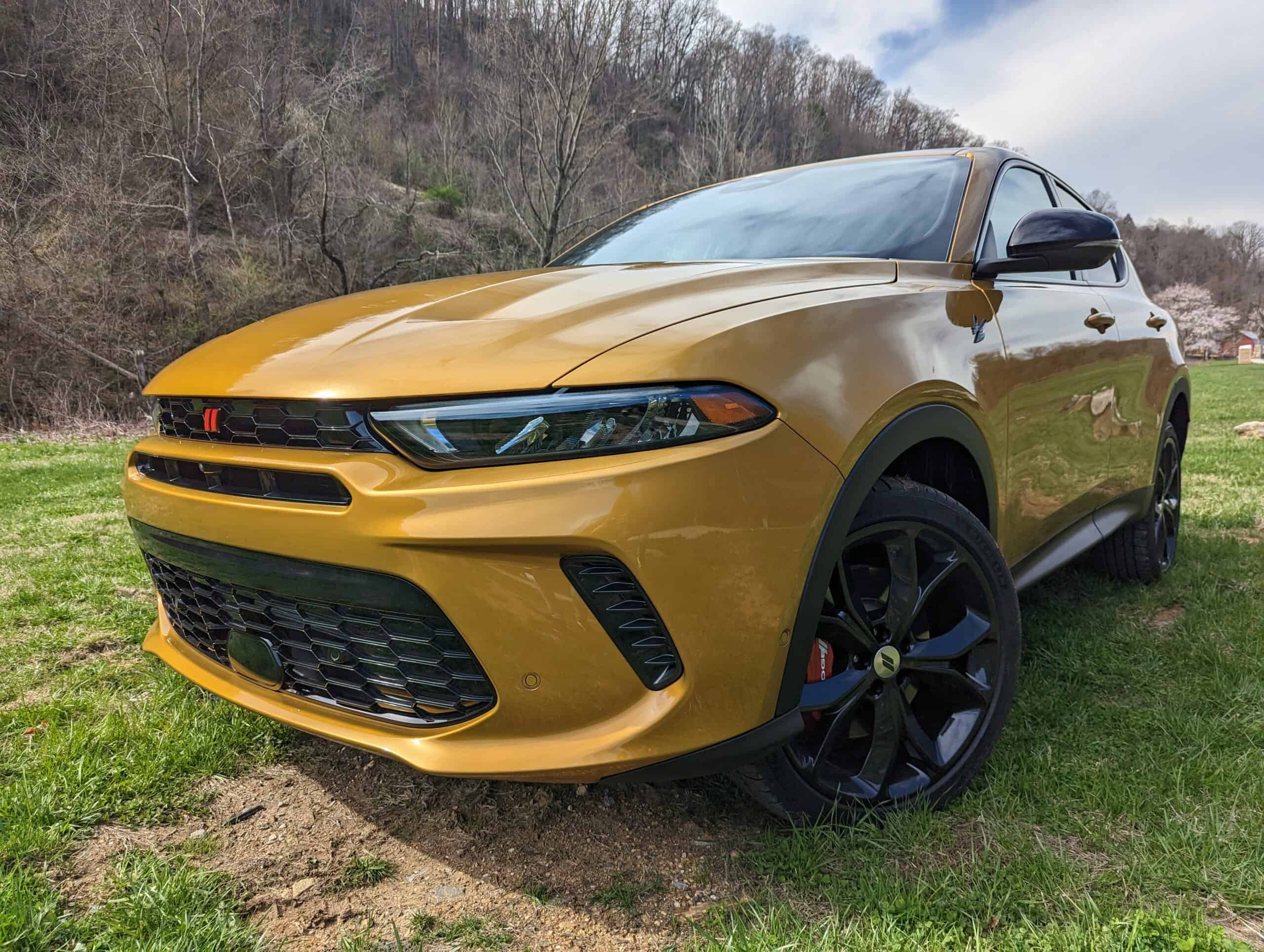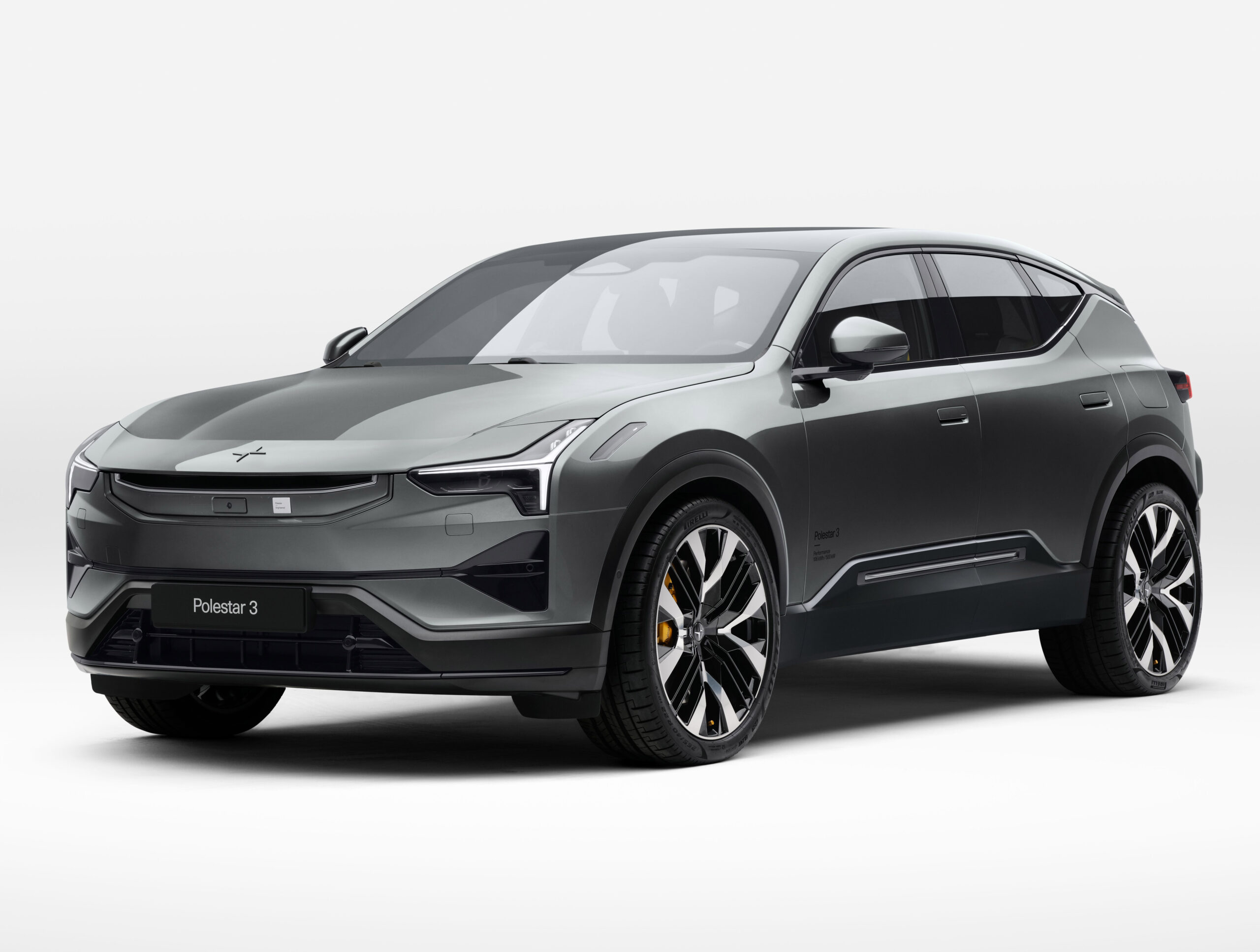

Do you remember what you were doing when Dodge came out with its last new model, the Dart, in 2012? We don’t blame you if you don’t, that was a long time ago. Things are finally changing, however, with the introduction of the all-new Dodge Hornet – a subcompact crossover based on the Alfa Romeo Tonale. This is certainly re-badging at its finest, but Dodge has injected a palpable amount of aggression into the feel of this little thing, in both GT and R/T plug-in hybrid forms. Is it the mainstream comeback story Dodge needs right now?
The Hornet is a modern case of badge engineering in the same vein as the GM large SUV family (Tahoe, Yukon, Escalade, etc.). Here, the Alfa Romeo Tonale provides the bones and body, as well as one of the powertrains, while Dodge provides a few design details, a tweaked interior, and a bit of street cred. To be fair to Alfa, we haven’t driven the Tonale yet, so there really are no comparisons to be made when it comes to driving dynamics. We suspect that it will end up receiving a softer tune than this, as the Hornet is very sporty when equipped with the Track Pack.

Speaking of the Track Pack, it adds the 20″ black wheels, front Brembo brakes, Michelin Pilot Sport All-Season 4 tires, and the blacked-out badging you see on this particular model. 18″ and 17″ wheels are also available on lesser configurations, though they do not fill the wheels wells as satisfyingly as these 20’s do. When looking holistically at the car from a front 3/4 angle, the Hornet doesn’t appear to be anything more than a Tonale with a face transplant donated from the Dodge Charger. The general public that’s lacking the background knowledge on the origin of this car will love it. Those who know the Alfa connection might find that the execution didn’t go far enough. If only they could have tweaked the shape of the daylight opening just a tad bit, it might work a little better, especially around the c-pillar.
The rear end is not substantially different from its Italian platform-mate, with a horizontal light bar that uses a different design to the LED housings. The Dodge ‘rhombi’ logo sits in the center and illuminates red at night along with the accent bar, just like Volkswagen is beginning to do with its emblem. After that, the main thing to note is that only R/T models receive exhaust outlets, and the black molding that surrounds them and the rest of the lower portions of the body is shiny, instead of matte on the GT.

Inside, you’re looking at the nicest interior the brand has ever seen, which, depending on how you look at it, could be a good thing or a bad thing. Materials on the model I was driving were pretty solid. The upgraded leather seats had red mesh Alcantara inserts and were very comfortable for how heavily-bolstered they were. In a surprise move, Dodge gave both the driver and passenger’s seat 12-way power adjustments, including 4-way lumbar. That’s not something you typically see in this segment.

The steering wheel and dashboard design are nearly copy-and-paste from the Alfa, however Dodge did tilt the center screen and module more towards the driver and altered a few details here and there to give it a sporty feel. GT models do not come with paddle shifters, but the R/T plug-in hybrid does, and they are the same massive column-mounted ones you’ll find in Alfa Romeos. If you get the Track Pack, the wheel has a flat bottom and a great use of material on the 10+2 grips. The one on this model was also heated.

The large LCD instrument cluster is standard, as is the 10.25″ UConnect 5 infotainment screen. It is the best application of UConnect I have used in a Stellantis product yet, so bravo to Dodge for making that happen. Wireless Apple CarPlay and Android Auto are standard, but if you don’t use those, the integrated UI is snappy and well-organized. The Hornet is available with a moonroof, though it’s only the standard size – a panoramic option is not on offer.
In terms of space, the Hornet is definitely small on the inside, but not punishingly so. Head room is good in the front and back for me at 5’9″, but leg room in the second row is not as generous. The average American body will probably be fine, and if you want to sit three across in the back, the middle seat is not nearly as high up as it tends to be in vehicles like this. There’s a ski pass-through if you want to fit longer items in the car without folding down either outboard seating positions. Cargo volume comes in at 27 cubic-feet behind the second row, 54.7 behind the first row, both figures falling closer to the subcompact competitors than the compact ones like RAV4.
The Hornet GT is powered by the new Hurricane4 2.0L turbocharged 4-cylinder engine making 268 horsepower and 295 lb.-ft. of torque. Torque-vectoring all-wheel drive and a 9-speed automatic transmission are standard, but the engine is rated at a measly 24 mpg combined via a 13.5-gallon tank. Many competitors offer better numbers in that area, but theres’ a solution in the R/T. Dodge says that engaging the Sport drive mode in the GT enables the quickest 0-60 acceleration time – 6.5 seconds. Though, most of us were getting unofficial times closer to 6 seconds, so that could be a tad underrated.
If it’s better fuel economy and more performance you’re after, the R/T is powered by a 1.3L turbocharged 4-cylinder paired with a 120-horsepower electric motor on the rear axle to give you 288 horsepower and 383 lb.-ft. of torque. The transmission is a 6-speed automatic instead of the GT’s 9-speed. Though the EPA hasn’t released fuel economy figures for the hybrid system just yet, that’s okay because the R/T goes on sale later in the Spring as a 2024 model. They have some time. The rear electric motor and engine are not mechanically connected, but electronically work together to provide all-wheel drive, front-wheel drive, or even rear-wheel drive. We do know that the R/T will drive 30 miles using only electricity from the battery if you actually plug it in to charge. The on-board 7.4 kW AC charger can fill the 15.5-kWh battery in 2.5 hours when using a level 2 charger, but it can be done in one sweet night when using the 110V plug in your garage.
Driving the Hornet GT is a dynamic and sporty experience, feeling more like a tall hot hatch than a smaller performance crossover, even though that’s exactly what this is. The Hornet is, actually, in a league of its own when you think about it. With this potent engine that has 268 horsepower standard, Dodge can claim that it is the quickest “utility vehicle” for under $30,000. The problem with that claim is that the Hornet starts at $29,995 before destination, so most of them won’t even be in that category. Nevertheless, I repeatedly bested the officially-claimed 6.5-second 0-60 mph time, as did other drivers at the drive event in Asheville, NC. Asheville is in the mountains, so higher elevation and very few flat roads to work with, so take all of that with a grain of salt until we can get one home to test.
The Hornet’s brake pedal did not feel too firm or mushy, and lacked any dead travel at the top. If you get the Track Pack, Dodge adds the 20″ wheels with Michelin Pilot Sport All Season 4 tires and Brembo brakes up front. The tires are impressively magnetic to the pavement, making it shockingly easy to fling the Hornet into manageable corners without any loss of grip. The suspension is adaptive on this model, so it can become firmer in the Sport drive mode, but not drastically so. It always does a good job at making up for the size of the 20″ wheels by absorbing bumps in the road and transferring mostly premium-feeling reverberations back to occupants. It feels like a new lease on life for Dodge, as the rest of the lineup has begun to focus more on straight-line speed, making this model really stand out as something fresh for the brand.
Unfortunately, the GT isn’t graced with the same massive paddle shifters as the R/T. You can shift with the shifter on the console, and he transmission is relatively snappy at responding. Keep it in automatic, however, and the 9-speed auto can hesitate to downshift at critical RPM levels. The same ones that you might find yourself at as you’re trying to turn onto a busy city thoroughfare. Once you rev the engine up a bit, the power really comes on strong. It does sound like a 4-cylinder on the inside, but they did the best they could to make it sound a little bit tougher, a little bit brawnier. If it’s a V6 feel or even a V8 feel you’re after, this is obviously not the kind of car for you.
Steering feel is actually little bit lighter than I was expecting, but it is very direct. There is a good bit of feedback from the road compared to most other cars in the segment. If you want something more visceral, even more connected to the road, the Hyundai Kona N’s steering rack absolutely blows this one away. It is going to be a lot heavier than this one, though, so keep that in mind. Cabin noise is also surprising good. You don’t hear that much wind noise, but road/tire noise will make itself known. The 14-speaker premium Harmon Kardon audio system really helps fill the space with excellent sound quality for your tunes. Because of the idling and mountainous driving, I will hold judgement on fuel economy until we can get our hands on one to test that for ourselves. Expect low-20’s, though.
If it’s fuel economy you’re worried about in your Hornet, the RT is the one you’ll want. It can go 30 miles on electricity alone (if you charge it fully) and will definitely get better fuel economy (still not EPA-rated, so stay tuned). It is faster than this, but it’s also a good bit pricier…



